 By Caitlin Dewey | Kiplinger – Thu, May 3, 2012 9:35 AM EDT
By Caitlin Dewey | Kiplinger – Thu, May 3, 2012 9:35 AM EDT
In
some circles, "cheapskate" is a derogatory term. But in a world where
everyday expenses seem to be rising, well, every day, thriftiness isn't
shameful. In fact, it's just good common sense.
The best cities for cheapskates are places where a dollar stretches further -- a lot further. To come up with our list, we looked for metropolitan areas with low living costs and high incomes relative to those costs. The cities that made the cut have cost-of-living scores well below the national average of 100, according to the Council for Community and Economic Research.
[More from Kiplinger: 10 U.S. Cities with the Cheapest Cost of Living]
We also selected places that offer plenty of free (or nearly free) things to do. Like most people, cheapskates enjoy getting out. They just don’t want to pay a lot for the privilege. All the picks on our list boast large numbers of public libraries and museums per capita, ensuring affordable access to culture. And to guarantee frugal shopping options, we tallied the number of Dollar General stores -- a cheapskate favorite -- in a 30-mile radius of each city.
Check out our list of the 10 best cities for cheapskates.
1. St. Louis
Metro population: 2,812,896
Average household income: $69,992
Cost of living score: 91.2
Museums and libraries in metro area: 144
Dollar Generals in a 30-mile radius: 59
Must-see freebie: Forest Park, one of the largest urban parks in the U.S.
St. Louis isn't a huge city, but if we're counting per capita, it boasts more museums and libraries than any city on our list (and it beats New York and Washington, D.C., by a factor of 25). That's good news for folks looking to have a good time on a budget. Admission to top attractions, such as the city zoo and science center, is free. Citygarden, a $30-million, mixed-use sculpture park in downtown St. Louis, promises great gardening, art and picnics year-round. And if you do feel the need to spend some hard-earned cash -- at a Cardinals game or in the downtown shopping district, perhaps -- your money will go further here. While St. Louis residents earn roughly the same amount as average Americans, their living costs fall nearly 9% below the norm.
[More from Kiplinger: 10 U.S. Cities with the Most Expensive Cost of Living]
2. El Paso, Texas
Metro population: 800,647
Average household income: $57,981
Cost of living score: 91.0
Museums and libraries in metro area: 17
Dollar Generals in a 30-mile radius: 27
Must-see freebie: Alfresco! Fridays, a multicultural summer concert series
Living on the border has its benefits: outstanding Mexican food, cool fusion music and an extra-low cost of living. El Paso, like many Texas towns, enjoys cheaper utilities, transportation and overall livings costs than its northern peers. The city's location in the Chihuahuan Desert also means there's plenty of cheap stuff to do, particularly if you like the outdoors. Franklin Mountains State Park, the largest urban park in the country, contains 125 miles of multiuse trails and sits inside city limits. The River Park Trail follows the Rio Grande from El Paso to the New Mexico state line. Closer to home, the city offers a number of free attractions, like the El Paso Museum of Art, one of the country's top-rated rose gardens and an artisanal farmer's market.
3. Springfield, Ill.
Metro population: 210,170
Average household income: $66,639
Cost of living score: 88.1
Museums and libraries in metro area: 17
Dollar Generals in a 30-mile radius: 37
Must-see freebie: Lincoln Home National Historic Site
Lincoln's legacy lives on in his former hometown, at least in the form of free museums, parks, libraries and other historical attractions. Lincoln's family home, located in downtown Springfield, charges no admission. Twenty miles northwest, a 700-acre reconstruction of the town where Lincoln spent his young adulthood asks for only a $4 donation. Even if history isn't your thing, you'll find plenty of frugal things to do: Think parks, picnics and marinas around Lake Springfield, a seven-mile interurban trail and plenty of family-friendly art museums and amusement parks. Because living costs fall 12% below the national average -- one of the lowest scores on our list -- you'll get more bang for your buck, no matter what you end up doing.
[More from Kiplinger: 25 Ways to Waste Your Money]
4. Kalamazoo, Mich.
Metro population: 326,589
Average household income: $60,362
Cost of living score: 87.4
Museums and libraries in metro area: 27
Dollar Generals in a 30-mile radius: 21
Must-see freebie: All Ears Theater, a free live performance series organized by the Arts Council of Greater Kalamazoo
Kalamazoo's living costs are the lowest on our list: 13% below the national average and 21% below nearby Chicago. Housing is perhaps the city's most notably cheap amenity, with costs one-third below the national average. But Kalamazoo also offers a range of budget-friendly activities, from art and music at Western Michigan University to an unusually well-funded public library system. The Kalamazoo Nature Center, rated one of the country's best, charges $7 for nonmember admission and hosts free daily activities, from cooking workshops to yoga classes. Nearby parks, such as Cold Brook and Prairie View, boast a combined 140 miles of trails and three swimming beaches. Bored of the outdoors? Take your savings to Chicago, less than three hours away.
5. Spokane, Wash.
Metro population: 471,221
Average household income: $61,695
Cost of living score: 93.0
Museums and libraries in metro area: 19
Dollar Generals in a 30-mile radius: 0 (but 9 Dollar Trees within 25 miles)
Must-see freebie: Mount Spokane, a 13,919-acre state park in the Selkirk Mountains
With 76 lakes, five ski mountains and 4,100 acres of city parks, Spokane is a paradise for outdoorsy types – especially outdoorsy types on a budget. Living costs fall 7% below the national average, and because most outdoor attractions charge no admission, you can enjoy the Lilac City for even less than that. Spokane is noted for its public parks, which include a national wildlife refuge and a 100-acre urban park in downtown Spokane. To the northeast, Mount Spokane State Park ranks as Washington's largest and contains a non-profit ski and snowboard center. The city is also home to a Smithsonian-affiliated art museum and a 65-acre arboretum. While the museum charges admission, the arboretum is free.
6. San Antonio
Metro population: 2,142,508
Average household income: $65,337
Cost of living score: 93.2
Museums and libraries in metro area: 58
Dollar Generals in a 30-mile radius: 65
Must-see freebie: Main Plaza, an historic square
San Antonio enjoys the economical living costs that are standard in much of Texas. But the city's budget-minded cultural amenities put it far above its neighbors: Per capita, the Alamo City has nearly five times as many museums and libraries as Austin and seven times as many as Houston. Many of these attractions -- such as the historic Alamo site, the arts village at La Villita and the River Walk that follows the San Antonio River -- charge no admission. The city also loves its free festivals and seems to celebrate one every few weeks. Luminaria, an outdoor performance festival, brings theater and music downtown every May. Other free festivals recognize photography, jazz, mariachi and a range of local and national holidays, including, of course, Cinco de Mayo.
[Related: America's fastest-growing cities]
7. Eau Claire, Wis.
Metro population: 161,151
Average household income: $60,025
Cost of living score: 90.3
Museums and libraries in metro area: 11
Dollar Generals in a 30-mile radius: 3
Must-see freebie: Lake Wissota, a 6,300-acre lake
"Eau Claire" means "clear water" in French. It’s a relevant translation if you're looking for cheap things to do in this midsize Wisconsin city. Proximity to the Chippewa River makes outdoor activities such as camping and swimming budget-friendly options. Lake Wissota State Park, 20 miles northeast of Eau Claire, offers 1,062 acres of forests and prairie and a large lake complete with swimming beach. Closer to home, the Chippewa Valley Trail System provides ample mileage for bikers, hikers and skaters. The area also boasts a planetarium, a cranberry museum and a full slate of concerts and performances at the University of Wisconsin. While some of these places charge admission, Eau Claire's ultra-low living costs mean your dollar stretches further.
8. South Bend, Ind.
Metro population: 319,224
Average household income: $59,048
Cost of living score: 92.4
Museums and libraries in metro area: 26
Dollar Generals in a 30-mile radius: 31
Must-see freebie: The Snite Museum of Art, a 24,000-work collection
South Bend may be best known for the University of Notre Dame, but for this small, post-industrial city, that isn't a bad thing. Its Midwest location keeps living costs modest -- nearly 8% below the national average -- while the university and its 8,500 students bring low-cost attractions and events to town. On any given day in April, for instance, ten or more university events were open to the public, from baseball games and film screenings to readings and lectures. Tickets to Fighting Irish games (except football) run as low as $5 for adults and $3 for children. Plus, the university boasts a well-regarded art museum, which is always free.
9. Jonesboro, Ark.
Metro population: 121,026
Average household income: $52,249
Cost of living score: 89.2
Museums and libraries in metro area: 10
Dollar Generals in a 30-mile radius: 26
Must-see freebie: Crowley's Ridge Nature Center, a scenic educational park
Jonesboro benefits greatly from its proximity to Crowley's Ridge Parkway, a 200-mile network of roads recognized by the Department of Transportation for its scenic and historic quality. You'll find plenty of cheap outdoor offerings nearby: a hundred-acre nature center, a city-owned park and a national wildlife area with ample acres for fishing, boating and bird-watching. For affordable culture in the Ozarks, look no further than the Arkansas State University Museum, which houses 21,000 square feet of exhibits -- and a mastodon skeleton. While Jonesboro's average income falls well below the national average, its superlow living costs offset the smaller paychecks.
10. Wichita, Kan.
Metro population: 623,061
Average household income: $63,691 (U.S. avg.: $70,883)
Cost of living score: 92.3 (U.S. avg.: 100)
Museums and libraries in metro area: 48 (U.S. avg.: 35)
Dollar Generals in a 30-mile radius: 32
Must-see freebie: The Ulrich Museum of Art, which boasts 6,600 works
Wichita is home to 36 museums, 20 live theaters and 35 art galleries. In other words, there are more than enough affordable cultural attractions to put it in the big leagues. Five museums sit along the Arkansas River, including the Wichita Art Museum, a botanical garden and a living history center, all of which charge $8 or less for admission. Outside of town, the Great Plains Nature Center serves up two miles of trails and regular programming for free. Wichita's overall living expenses are 8% below the national average, with food prices being particularly cheap. Speaking of food, the city has a thriving dining scene, which includes a growing number of inexpensive Lebanese and Vietnamese restaurants.
The best cities for cheapskates are places where a dollar stretches further -- a lot further. To come up with our list, we looked for metropolitan areas with low living costs and high incomes relative to those costs. The cities that made the cut have cost-of-living scores well below the national average of 100, according to the Council for Community and Economic Research.
[More from Kiplinger: 10 U.S. Cities with the Cheapest Cost of Living]
We also selected places that offer plenty of free (or nearly free) things to do. Like most people, cheapskates enjoy getting out. They just don’t want to pay a lot for the privilege. All the picks on our list boast large numbers of public libraries and museums per capita, ensuring affordable access to culture. And to guarantee frugal shopping options, we tallied the number of Dollar General stores -- a cheapskate favorite -- in a 30-mile radius of each city.
Check out our list of the 10 best cities for cheapskates.
1. St. Louis
Metro population: 2,812,896
Average household income: $69,992
Cost of living score: 91.2
Museums and libraries in metro area: 144
Dollar Generals in a 30-mile radius: 59
Must-see freebie: Forest Park, one of the largest urban parks in the U.S.
St. Louis isn't a huge city, but if we're counting per capita, it boasts more museums and libraries than any city on our list (and it beats New York and Washington, D.C., by a factor of 25). That's good news for folks looking to have a good time on a budget. Admission to top attractions, such as the city zoo and science center, is free. Citygarden, a $30-million, mixed-use sculpture park in downtown St. Louis, promises great gardening, art and picnics year-round. And if you do feel the need to spend some hard-earned cash -- at a Cardinals game or in the downtown shopping district, perhaps -- your money will go further here. While St. Louis residents earn roughly the same amount as average Americans, their living costs fall nearly 9% below the norm.
[More from Kiplinger: 10 U.S. Cities with the Most Expensive Cost of Living]
2. El Paso, Texas
Metro population: 800,647
Average household income: $57,981
Cost of living score: 91.0
Museums and libraries in metro area: 17
Dollar Generals in a 30-mile radius: 27
Must-see freebie: Alfresco! Fridays, a multicultural summer concert series
Living on the border has its benefits: outstanding Mexican food, cool fusion music and an extra-low cost of living. El Paso, like many Texas towns, enjoys cheaper utilities, transportation and overall livings costs than its northern peers. The city's location in the Chihuahuan Desert also means there's plenty of cheap stuff to do, particularly if you like the outdoors. Franklin Mountains State Park, the largest urban park in the country, contains 125 miles of multiuse trails and sits inside city limits. The River Park Trail follows the Rio Grande from El Paso to the New Mexico state line. Closer to home, the city offers a number of free attractions, like the El Paso Museum of Art, one of the country's top-rated rose gardens and an artisanal farmer's market.
3. Springfield, Ill.
Metro population: 210,170
Average household income: $66,639
Cost of living score: 88.1
Museums and libraries in metro area: 17
Dollar Generals in a 30-mile radius: 37
Must-see freebie: Lincoln Home National Historic Site
Lincoln's legacy lives on in his former hometown, at least in the form of free museums, parks, libraries and other historical attractions. Lincoln's family home, located in downtown Springfield, charges no admission. Twenty miles northwest, a 700-acre reconstruction of the town where Lincoln spent his young adulthood asks for only a $4 donation. Even if history isn't your thing, you'll find plenty of frugal things to do: Think parks, picnics and marinas around Lake Springfield, a seven-mile interurban trail and plenty of family-friendly art museums and amusement parks. Because living costs fall 12% below the national average -- one of the lowest scores on our list -- you'll get more bang for your buck, no matter what you end up doing.
[More from Kiplinger: 25 Ways to Waste Your Money]
4. Kalamazoo, Mich.
Metro population: 326,589
Average household income: $60,362
Cost of living score: 87.4
Museums and libraries in metro area: 27
Dollar Generals in a 30-mile radius: 21
Must-see freebie: All Ears Theater, a free live performance series organized by the Arts Council of Greater Kalamazoo
Kalamazoo's living costs are the lowest on our list: 13% below the national average and 21% below nearby Chicago. Housing is perhaps the city's most notably cheap amenity, with costs one-third below the national average. But Kalamazoo also offers a range of budget-friendly activities, from art and music at Western Michigan University to an unusually well-funded public library system. The Kalamazoo Nature Center, rated one of the country's best, charges $7 for nonmember admission and hosts free daily activities, from cooking workshops to yoga classes. Nearby parks, such as Cold Brook and Prairie View, boast a combined 140 miles of trails and three swimming beaches. Bored of the outdoors? Take your savings to Chicago, less than three hours away.
5. Spokane, Wash.
Metro population: 471,221
Average household income: $61,695
Cost of living score: 93.0
Museums and libraries in metro area: 19
Dollar Generals in a 30-mile radius: 0 (but 9 Dollar Trees within 25 miles)
Must-see freebie: Mount Spokane, a 13,919-acre state park in the Selkirk Mountains
With 76 lakes, five ski mountains and 4,100 acres of city parks, Spokane is a paradise for outdoorsy types – especially outdoorsy types on a budget. Living costs fall 7% below the national average, and because most outdoor attractions charge no admission, you can enjoy the Lilac City for even less than that. Spokane is noted for its public parks, which include a national wildlife refuge and a 100-acre urban park in downtown Spokane. To the northeast, Mount Spokane State Park ranks as Washington's largest and contains a non-profit ski and snowboard center. The city is also home to a Smithsonian-affiliated art museum and a 65-acre arboretum. While the museum charges admission, the arboretum is free.
6. San Antonio
Metro population: 2,142,508
Average household income: $65,337
Cost of living score: 93.2
Museums and libraries in metro area: 58
Dollar Generals in a 30-mile radius: 65
Must-see freebie: Main Plaza, an historic square
San Antonio enjoys the economical living costs that are standard in much of Texas. But the city's budget-minded cultural amenities put it far above its neighbors: Per capita, the Alamo City has nearly five times as many museums and libraries as Austin and seven times as many as Houston. Many of these attractions -- such as the historic Alamo site, the arts village at La Villita and the River Walk that follows the San Antonio River -- charge no admission. The city also loves its free festivals and seems to celebrate one every few weeks. Luminaria, an outdoor performance festival, brings theater and music downtown every May. Other free festivals recognize photography, jazz, mariachi and a range of local and national holidays, including, of course, Cinco de Mayo.
[Related: America's fastest-growing cities]
7. Eau Claire, Wis.
Metro population: 161,151
Average household income: $60,025
Cost of living score: 90.3
Museums and libraries in metro area: 11
Dollar Generals in a 30-mile radius: 3
Must-see freebie: Lake Wissota, a 6,300-acre lake
"Eau Claire" means "clear water" in French. It’s a relevant translation if you're looking for cheap things to do in this midsize Wisconsin city. Proximity to the Chippewa River makes outdoor activities such as camping and swimming budget-friendly options. Lake Wissota State Park, 20 miles northeast of Eau Claire, offers 1,062 acres of forests and prairie and a large lake complete with swimming beach. Closer to home, the Chippewa Valley Trail System provides ample mileage for bikers, hikers and skaters. The area also boasts a planetarium, a cranberry museum and a full slate of concerts and performances at the University of Wisconsin. While some of these places charge admission, Eau Claire's ultra-low living costs mean your dollar stretches further.
8. South Bend, Ind.
Metro population: 319,224
Average household income: $59,048
Cost of living score: 92.4
Museums and libraries in metro area: 26
Dollar Generals in a 30-mile radius: 31
Must-see freebie: The Snite Museum of Art, a 24,000-work collection
South Bend may be best known for the University of Notre Dame, but for this small, post-industrial city, that isn't a bad thing. Its Midwest location keeps living costs modest -- nearly 8% below the national average -- while the university and its 8,500 students bring low-cost attractions and events to town. On any given day in April, for instance, ten or more university events were open to the public, from baseball games and film screenings to readings and lectures. Tickets to Fighting Irish games (except football) run as low as $5 for adults and $3 for children. Plus, the university boasts a well-regarded art museum, which is always free.
9. Jonesboro, Ark.
Metro population: 121,026
Average household income: $52,249
Cost of living score: 89.2
Museums and libraries in metro area: 10
Dollar Generals in a 30-mile radius: 26
Must-see freebie: Crowley's Ridge Nature Center, a scenic educational park
Jonesboro benefits greatly from its proximity to Crowley's Ridge Parkway, a 200-mile network of roads recognized by the Department of Transportation for its scenic and historic quality. You'll find plenty of cheap outdoor offerings nearby: a hundred-acre nature center, a city-owned park and a national wildlife area with ample acres for fishing, boating and bird-watching. For affordable culture in the Ozarks, look no further than the Arkansas State University Museum, which houses 21,000 square feet of exhibits -- and a mastodon skeleton. While Jonesboro's average income falls well below the national average, its superlow living costs offset the smaller paychecks.
10. Wichita, Kan.
Metro population: 623,061
Average household income: $63,691 (U.S. avg.: $70,883)
Cost of living score: 92.3 (U.S. avg.: 100)
Museums and libraries in metro area: 48 (U.S. avg.: 35)
Dollar Generals in a 30-mile radius: 32
Must-see freebie: The Ulrich Museum of Art, which boasts 6,600 works
Wichita is home to 36 museums, 20 live theaters and 35 art galleries. In other words, there are more than enough affordable cultural attractions to put it in the big leagues. Five museums sit along the Arkansas River, including the Wichita Art Museum, a botanical garden and a living history center, all of which charge $8 or less for admission. Outside of town, the Great Plains Nature Center serves up two miles of trails and regular programming for free. Wichita's overall living expenses are 8% below the national average, with food prices being particularly cheap. Speaking of food, the city has a thriving dining scene, which includes a growing number of inexpensive Lebanese and Vietnamese restaurants.
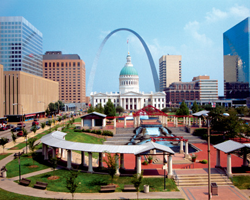
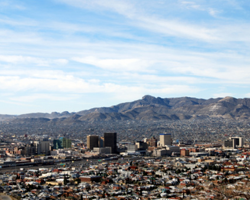
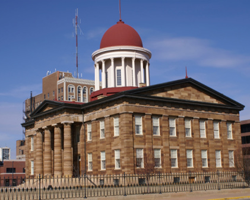

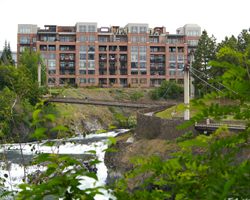
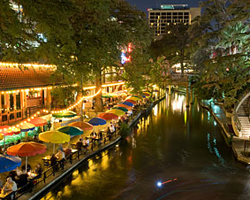
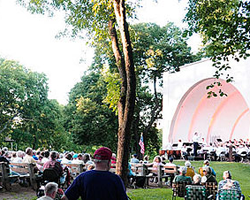
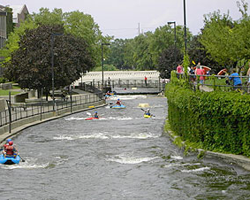

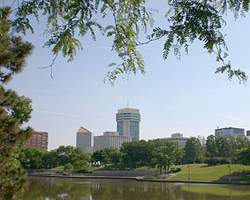
No comments:
Post a Comment